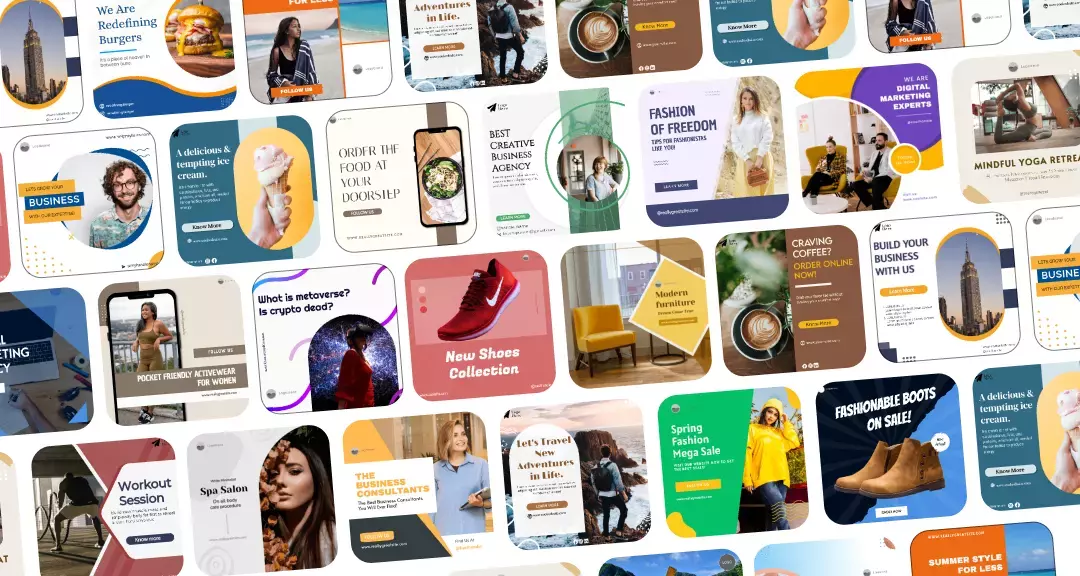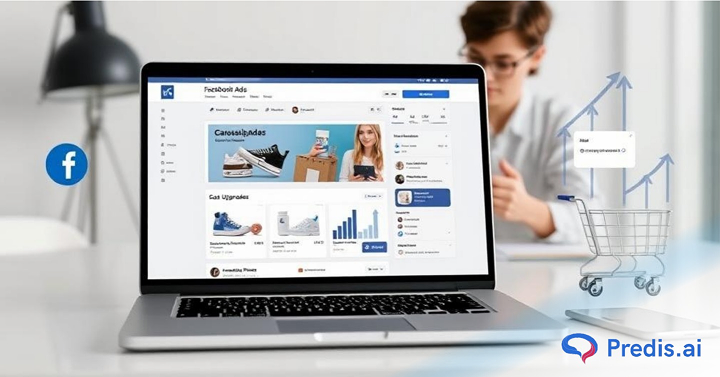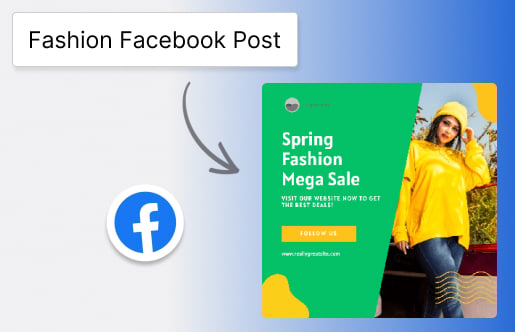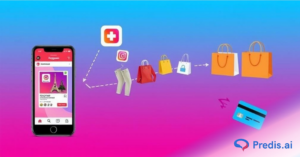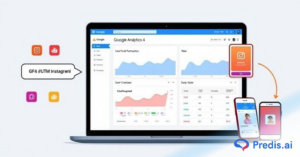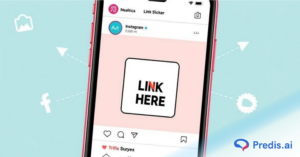Facebook Ads are no longer just a way to get people to know about your brand; they have changed into much more in today’s fast-paced world of digital marketing. Through smart upselling and cross-selling, they have become one of the best ways to raise the average order value. Facebook’s detailed targeting and dynamic ads make it a great place to get the most out of every contact with a customer, whether you have an online store or sell digital goods. You will learn step-by-step how to cross-sell and upsell with Facebook Ads in this guide. We’ll also talk about the main differences between the two methods, as well as how to improve them and what mistakes you should never make. Let’s get started!
What Is The Difference Between Upselling And Cross-Selling?
Upselling and cross-selling are two different ways to make sales. Before you start efforts, you should know the difference between the two!
- Upselling means getting people to buy a more expensive or better form of what they’re thinking about buying. If someone is looking at a basic coffee maker, you could try to sell them a more expensive one/premium with more features.
- Cross-selling, on the other hand, means suggesting items that go well with each other. In the case of the coffee machine, this could mean selling extra coffee beans, mugs, or filters.
- Both strategies are meant to bring in more money, but they work at different points in the customer trip. Cross-selling is best right before or after a purchase, while upselling works best when a buyer is still choosing.
Why Facebook Ads Are Great For Cross-Selling And Upselling?
Facebook ads are different from ads on other sites because they can be highly targeted, have dynamic creatives, and offer many tracking options. AOV (Average Order Value) will go up because of these things:
- Custom Audiences: Facebook lets you create groups based on what users do, like when they buy something, visit your website, or leave an item in their shopping cart. This way, your ads will reach the right people at the right time.
- Lookalike Audiences: You can find new people who resemble your most expensive or highest spending customers.
- Dynamic Product Ads (DPAs): When you use dynamic product ads (DPAs), you can show each user the most relevant goods based on how they browse.
- Retargeting Power: Facebook’s pixel lets you precisely track and retarget for upsell and cross-sell tactics.
- Cost Efficiency: Facebook ads usually cost less than Google ads, especially when it comes to retargeting.
Because of all of these factors, Facebook is the best place to give relevant, valuable product ideas that lead to sales.
How To Upsell And Cross-Sell With Facebook Ads?
Let’s look at how to design high-converting Facebook ads that effectively upsell and cross-sell products.
1. Set Up the Facebook Pixel and Conversion Tracking
- Start by adding the Facebook Pixel to your website. Facebook pixel is a little piece of code that monitors a user’s behavior for retargeting and conversion tracking.
- You need to make sure to set up events such as ViewContent, AddToCart, InitiateCheckout, and Purchase.
- These signals help Facebook to understand where your consumers are in their purchasing journey. This allows you to target them with the appropriate upsell or cross-sell offer.
2. Build Custom Audiences Based on Buyer Behavior
- Use Facebook’s Custom Audiences function to segment your traffic.
- Past Buyers: Excellent for cross-selling similar products.
- Cart Abandoners: Ideal for upselling with a convincing upgrade option.
- Product Viewers: Present them with improved or premium versions of the items they browsed.
- Tailoring your audience: makes your upsell/cross-sell tactics more personalized and relevant, boosting the likelihood of conversion.
3. Create a Product Catalog and Use Dynamic Product Ads.
- To automate and grow your campaigns, establish a product catalog in Meta Commerce Manager.
- Once configured, connect it to your Facebook Ads account to launch Dynamic Product Ads (DPAs).
- These ads display product information such as photos, prices, and availability directly from your catalog.
- Then, Facebook displays the most relevant product versions that depends on user behavior which is ideal for real-time upselling and cross-selling.

4. Create Highly Effective Ad Creatives
- Your advertising creative must do more than simply look good; it must also motivate people to take action.
- You can use eye-catching visuals, group deals, and clear statements of what the product or service is worth.
- You can make Carousel ads by using Predis AI’s Carousel ad maker. These are effective in showcasing a number of connected products for cross-selling.
- A side-by-side comparison of standard and premium solutions can be quite effective for upsells.
- Include urgency components such as “Limited stock” or “Upgrade today to get 20% off.” These psychological cues encourage users to make judgments faster.
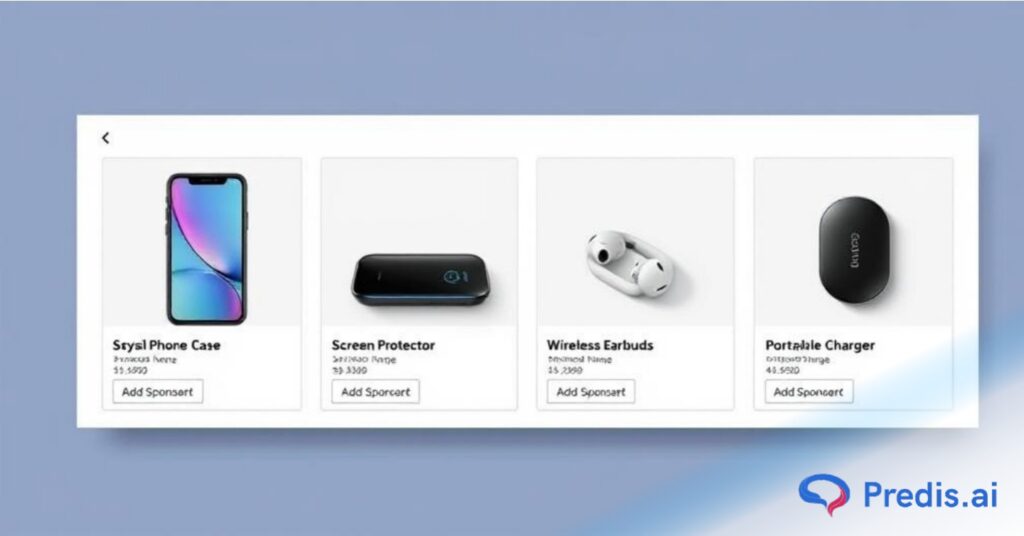
5. Create Smart Ad Copy and CTAs
Your text should clearly state the benefits of upgrading or adding complementing items. You need to keep it concise, direct, and value-driven. You can check Predis AI’s “How to write a killer ad copy” for best results!
- Examples:
- Upsell: “Level up your skincare routine with our premium serum—only $5 more!”
- Cross-sell: “Don’t forget the perfect pair of sunglasses for your new summer outfit.”
- Use compelling CTAs such as “Upgrade Now,” “Add This to Your Cart,” or “Complete Your Kit.”
6. Optimize placements and budgets
- Facebook has a lot of ad places including Feed, Stories, and Reels.
- Most of the time, Feed and Story placements are most effective for upselling and cross-selling. This is because of their visual-first nature and increased engagement.
- Begin with Automatic Placements and let the algorithm choose which works best.
- Then refine the same based on performance.
- Keep your budget focused on remarketing advertising, which typically produces a greater ROI.
Best Practices To Maximize Upsell and Cross-Sell Campaigns
Follow these tips from experts to get the most out of your campaigns:
- Personalize Whenever Possible: Ads can be made more relevant to users based on their past purchases or how they have behaved.
- Keep It Simple: Don’t send too many product ideas to users. Only include two or three very important things.
- Upsell Within Range: Make sure that the prices of offer items aren’t too much higher—they should be about 25–40% of the original price, at the very least.
- Create Urgency: Limited-time deals or alerts that stock is low can get people to act.
- A/B Test Continuously: A/B test involves experimenting with a variety of creatives, calls to action, and offers to determine which ones are most effective in converting.
Common Mistakes To Avoid
It is simple to slip into classic traps, even when one is equipped with the best equipment. Be sure to avoid these errors:
- Irrelevant Suggestions: Do not display products that are not interrelated. It erodes trust and wastes money at the same time.
- Targeting cold audiences too early: It is common for people who have never interacted with your brand before to have a negative experience when you attempt to upsell or cross-sell to them.
- Skipping audience segmentation: Using a large audience will cause your message to not have a strong effect. Hence, create a tight segment, as you also risk serving the wrong offer at the wrong time.
- Ignoring ad fatigue signals: To avoid banner blindness and avoid ad fatigue, it is important to rotate creatives on a regular basis.
- Using generic messaging for everyone: When different parts of your audience have distinct requirements, behaviors, and purchasing patterns, it is extremely important to avoid taking a generic strategy when writing your advertising content and creatives.
- Forgetting to test and optimize: The mistake that many advertisers make is that they just run one version of an advertisement without conducting A/B tests for different features such as creatives, headlines, or offers. This restricts your potential to learn and scale, which is a significant disadvantage.
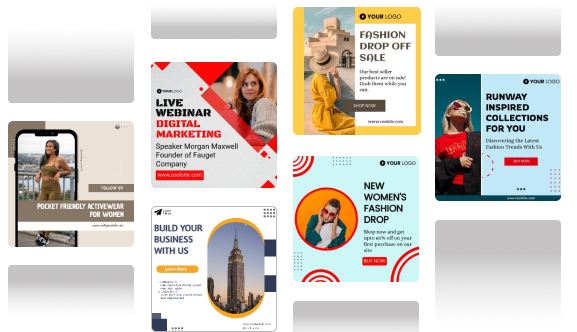
Tools & Integrations That Can Help
To streamline your process, consider these tools:
- Meta Commerce Manager: Manage product catalogs and dynamic ad feeds.
- Shopify/Magento Integrations: Sync product data effortlessly, including Magento 2 extensions & Shopify apps to ensure consistent product details across platforms.
- SaveMyLeads: Automate lead syncs and trigger sequences.
- Zapier: Connect Facebook to your CRM, email marketing tools, and more.
These integrations ensure your campaigns stay fresh, data-driven, and scalable.
How to Measure Campaign Success?
Once your upsell and cross-sell campaigns with Facebook ads are live, it’s important to measure their performance with the right metrics to determine what’s working and what needs optimization. To truly understand what’s working, monitor these key metrics in Facebook Ads Manager:
- ROAS (Return on Ad Spend): The most critical metric for eCommerce. It measures how much revenue your ads generate per dollar spent.
- AOV (Average Order Value): Track changes after implementing upsell/cross-sell strategies. Let’s you know if the customers are spending more or less.
- CTR (Click-Through Rate): Higher CTR usually means your copy and creative are working.
- Frequency: Helps to identify ad fatigue by tracking how often the same user sees your ad.
- Use A/B testing: to compare different product bundles, creatives, and messaging. Small tweaks can lead to big performance gains.
Conclusion
Upsell and cross-sell with Facebook Ads isn’t just smart marketing—it’s essential for brands looking to grow profitably. With the right strategies, creative, and targeting in place, you can unlock new revenue streams from your existing audience. So go ahead—install that pixel, build those audiences, and start testing compelling offers. Your average order value and bottom line will thank you!
You May Also Like,
- How to Reverse Banner Blindness in Facebook Ads
